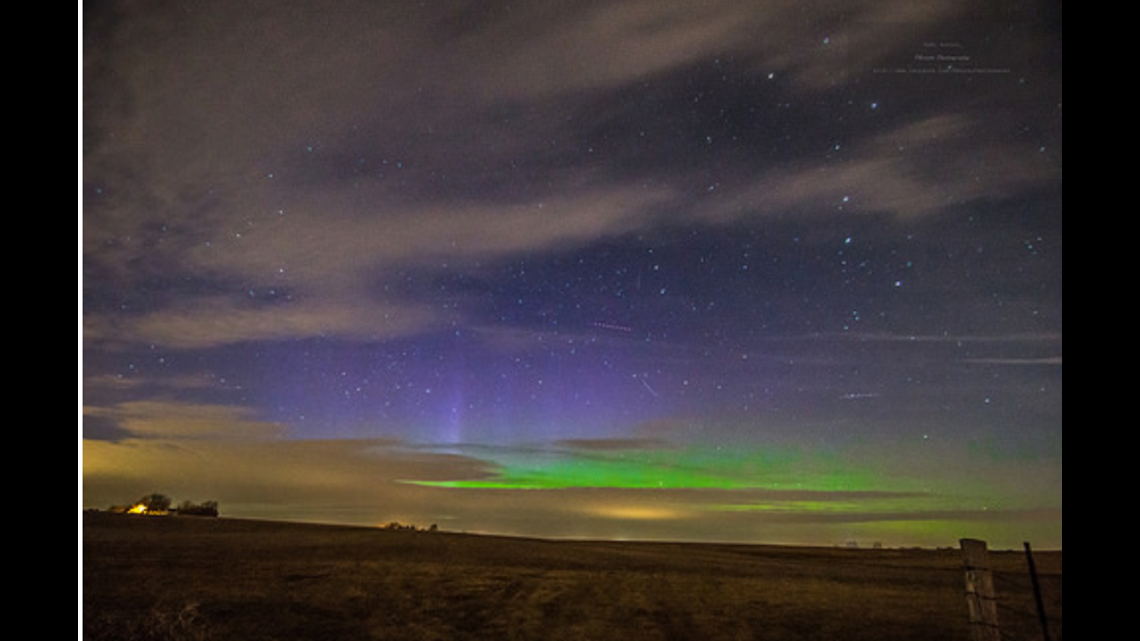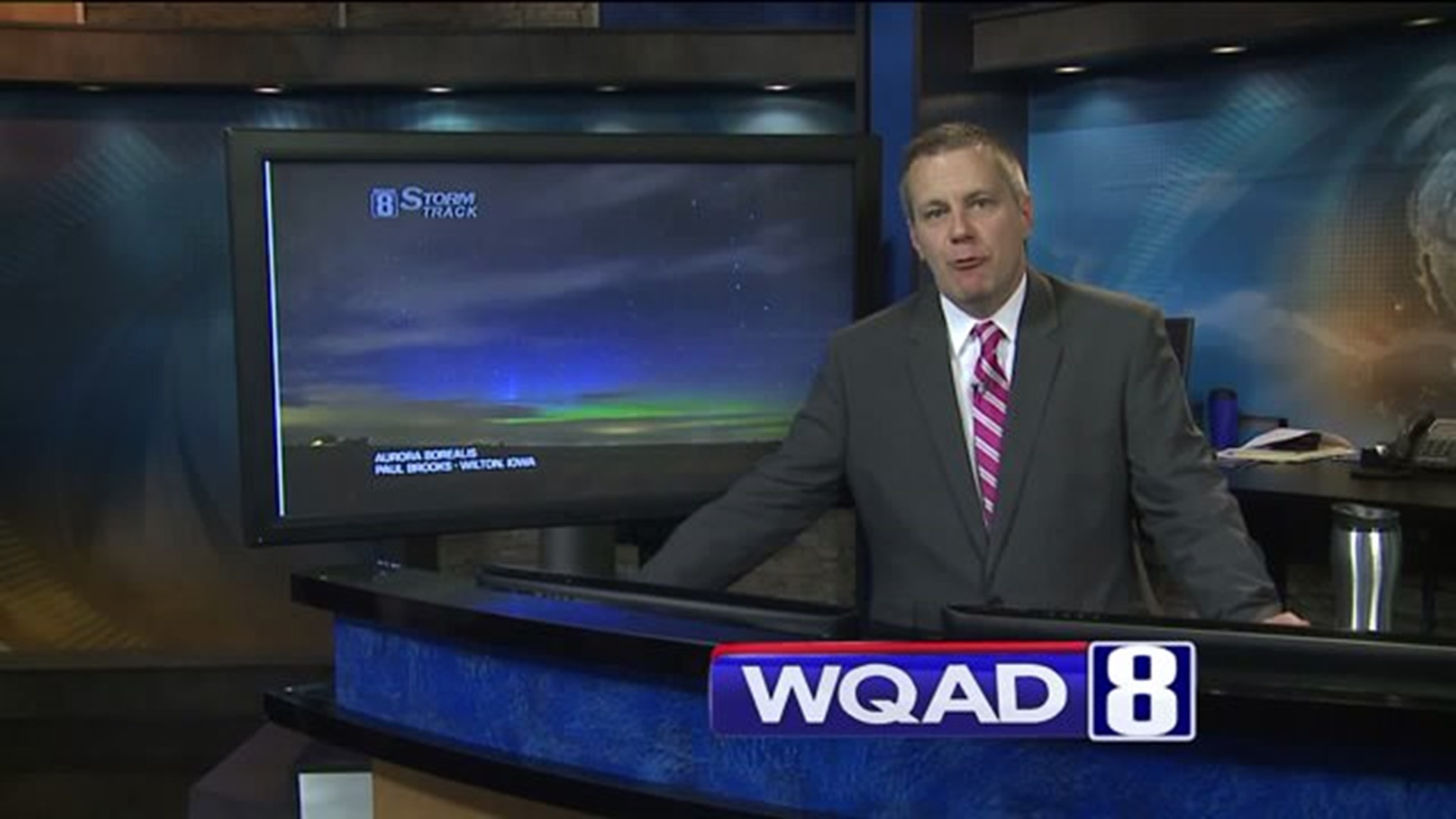But how does it work? The particles are ejected from the sun and travel at high rates of speed. In fact, they scoot toward the Earth at about 1,000 miles per second!
The magnetic field (or magnetosphere) attracts the solar particles, putting them together much like beads threaded on a wire. The magnetic north and south poles of the Earth attract the particles, causing them to accelerate as they travel down the "wires." They then collide with the atoms and molecules of the upper atmosphere where the magnetic field lines reach down toward the surface of the earth near the magnetic north and south poles. Atoms of oxygen and nitrogen release their energy in the form of light. This is the light we see from the ground...the Aurora Borealis. As more particles slide down the wires toward the poles, the light can bounce around in the sky which causes the Northern Lights to have motion.
Thanks to Paul Brooks for these photos taken near Wilton, Iowa. What a beautiful sight!



